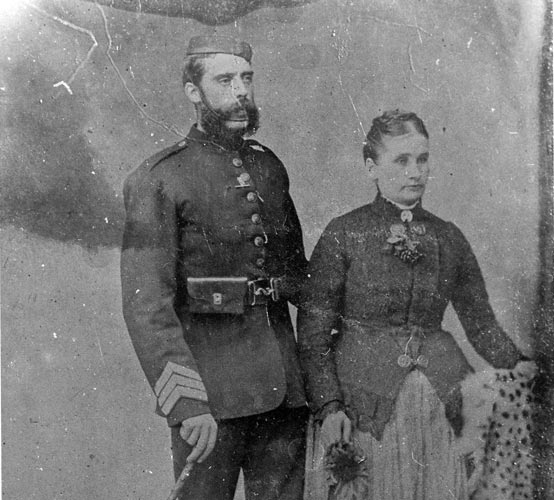Description
Initially marriage was discouraged in the Irish Constabulary and the percentage of married men in the force was restricted to 20%. New recruits had to be single and were forbidden to marry until they had seven years of service and at least £30 in savings. Lower ranks had to seek permission to marry from officers and provide the district inspector with "satisfactory references as to the character of his intended wife". If the man married a woman from his district, he was transferred to another county where neither he nor his wife had connections. If a secret marriage was discovered the man was dismissed.
Royal Irish Constabulary (RIC) men were considered always on duty and the force's Code of Regulations governed family and domestic life. If there was space, married sergeants were expected to live with their families within the barracks. Married quarters for a sergeant, wife and up to four children normally consisted of two rooms; a bedroom and sitting room with a shared hallway, stairway, kitchen and lavatory. Accommodation was provided for female children under the age of 14 years (16 years after 1883) and male children under 18 years. Rooms were bleak, bare and functional and the family was not permitted to use RIC property. The county inspector regularly inspected the sergeant’s quarters and had the power to remove families for "want of cleanliness" or wives "of a quarrelsome disposition, or whose conduct is not perfectly sober, quiet, and respectable".


